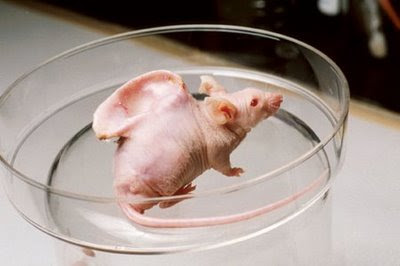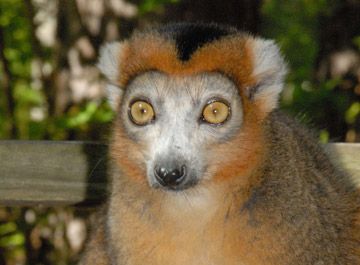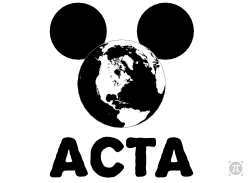The Planet's First-ever Mass-Extinction
Precipitated by a Biotic Agent: Humans
 Should we be alarmed at the current massive die-offs being noted in the animal and plant kingdoms? After all, new species arise and old species die off all the time. Its just nature taking its course, right? Not necessarily. The Earth is now entering the sixth mass extinction event in its four-billion-year history, but what’s different about this die-off is that this is the only such event precipitated by a biotic agent: humans.
Should we be alarmed at the current massive die-offs being noted in the animal and plant kingdoms? After all, new species arise and old species die off all the time. Its just nature taking its course, right? Not necessarily. The Earth is now entering the sixth mass extinction event in its four-billion-year history, but what’s different about this die-off is that this is the only such event precipitated by a biotic agent: humans.
The extinction numbers far outweigh the emergence of new species. From a purely selfish perspective, humans should be very concerned. Since we haven’t terraformed Mars yet, we still need a livable ecosystem on this planet in order to survive. As mass extinction occurs, experts say that we end up dealing with serious consequences. Recently, a team of scientists have discovered new information, that indicates things are worse than we previously thought.
"There's no question that we are in a mass extinction spasm right now," said David Wake, professor of integrative biology at UC Berkeley. "Amphibians have been around for about 250 million years. They made it through when the dinosaurs didn't. The fact that they're cutting out now should be a lesson for us."
A recent study supported by The National Science Foundation and National Institutes of Health, found that nearly all of the amphibian species that inhabit the peaks of the Sierra Nevada are threatened. Wake and Vance Vredenburg, research associate at the Museum of Vertebrate Zoology at UC Berkeley and assistant professor of biology at San Francisco State University discovered that for two of these species, the Sierra Nevada Yellow-legged Frog and the Southern Yellow-legged Frog, populations over the last few years declined by 95 to 98 percent, even in highly protected areas such as Yosemite National Park. This means that each local frog population has dwindled to 2 to 5 percent of its former size! Originally, frogs living atop the highest, most remote peaks seemed to thrive, but recently, they are also dying off.
In an article published online this week in the journal Proceedings of the National Academy of Sciences, the researchers argue that substantial die-offs of amphibians and other plant and animal species force us to accept that a new mass extinction is facing the planet.
Frogs are certainly not the only victims in this mass extinction, Wake noted. Many other scientists studying other organisms are discovering similarly dramatic effects.
Over 10,000 scientists in the World Conservation Union have compiled data showing that currently 51 per cent of known reptiles, 52 per cent of known insects, and 73 per cent of known flowering plants are in danger along with many mammals, birds and amphibians. It is likely that some species will become extinct before they are even discovered, before any medicinal use or other important features can be assessed. The cliché movie plot where the cure for cancer is about to be annihilated is more real than anyone would like to imagine.
"Our work needs to be seen in the context of all this other work, and the news is very, very grim," Wake said.
As of yet, there is no consensus among the scientific community about when exactly the current mass extinction started, notes Wake. It may have been 10,000 years ago, when humans first came from Asia to the Americas and hunted many of the large mammals to extinction. It may have started after the Industrial Revolution, when the human population exploded. Or, we might be seeing the start of it right now. But whatever the start date, empirical data clearly show that extinction rates have dramatically increased over the last few decades.
Peter Raven, past President of the American Association for the Advancement of Science, states in the foreword to their publication AAAS Atlas of Population and Environment, "We have driven the rate of biological extinction, the permanent loss of species, up several hundred times beyond its historical levels, and are threatened with the loss of a majority of all species by the end of the 21st century."
The causes of biocide are a hodge-podge of human environmental “poisons” which often work synergistically, including a vast array of pollutants and pesticides that weaken immunity and make plants and animals more susceptible to microbial and fungal infections, human induced climate change, habitat loss from agriculture and urban sprawl, invasions of exotic species introduced by humans, illegal and legal wildlife trade, light pollution, and man-made borders among other many other causes.
Is there a way out? The answer is yes and no. We’ll never regain the lost biodiversity-at least not within a fathomable time period, but there are ways to help prevent what many experts believe is a coming worldwide bio collapse. The eminent Harvard biologist Edward O Wilson has wisely noted that the time has come to start calling the "environmentalist view" the "real-world view". We can’t ignore reality simply because it doesn’t conform nicely within convenient boundaries and moneymaking strategies. After all, what good will all of our conveniences do for us, if we keep generating them in ways that collectively destroy the necessities of life?
Posted by Rebecca Sato.
Related Galaxy posts:
Exponential Technologies: Cheer Up World—We Are On the Verge of Great Things
The World's Largest & Deepest Lake, 25-million-Years Old, is in Trouble: A Galaxy Exclusive
* Portions of this post are extracts from a UC Berkeley press release.
Sources:
http://www.nasonline.org/site/PageNavigator/SACKLER_Biodiversity
http://www.berkeley.edu/news/media/releases/2008/08/12_extinction.shtml
http://progressive.atl.playstream.com/nakfi/progressive/Sackler/sackler_12_07_07/david_wake/david_wake.htmlhttp://www.dailygalaxy.com/my_weblog/2009/03/experts-say-the.html






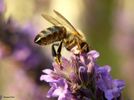

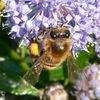



![caspianseal1006.jpg [The Caspian Seal (Pusa caspica) moved from vulnerable to endangered. Its population has declined by 90% in the last 100 years due to unsustainable hunting and habitat degradation and is still decreasing Photograph: Simon Goodman/IUCN]](http://www.commondreams.org/files/article_images/caspianseal1006.jpg) The Caspian Seal (Pusa caspica) moved from vulnerable to endangered. Its population has declined by 90% in the last 100 years due to unsustainable hunting and habitat degradation and is still decreasingPhotograph: Simon Goodman/IUCN
The Caspian Seal (Pusa caspica) moved from vulnerable to endangered. Its population has declined by 90% in the last 100 years due to unsustainable hunting and habitat degradation and is still decreasingPhotograph: Simon Goodman/IUCN 
![Géopolitique : Union transatlantique, la grande menace, par Alain De Benoist [tribune libre] Géopolitique : Union transatlantique, la grande menace, par Alain De Benoist [tribune libre]](http://www.breizh-info.com/wp-content/uploads/2014/06/tafta.jpg)






























